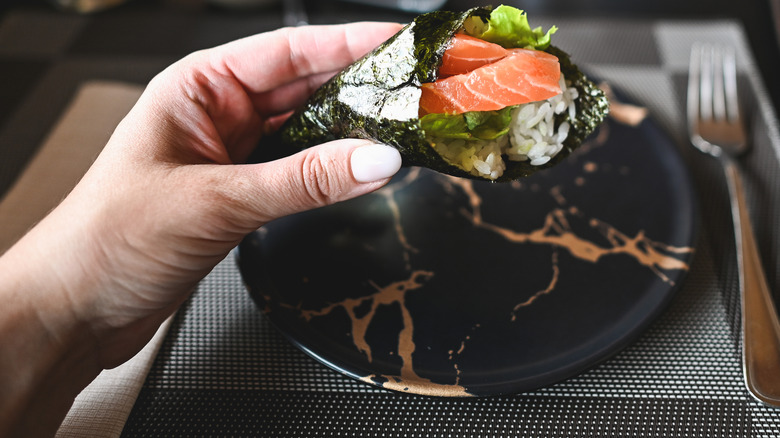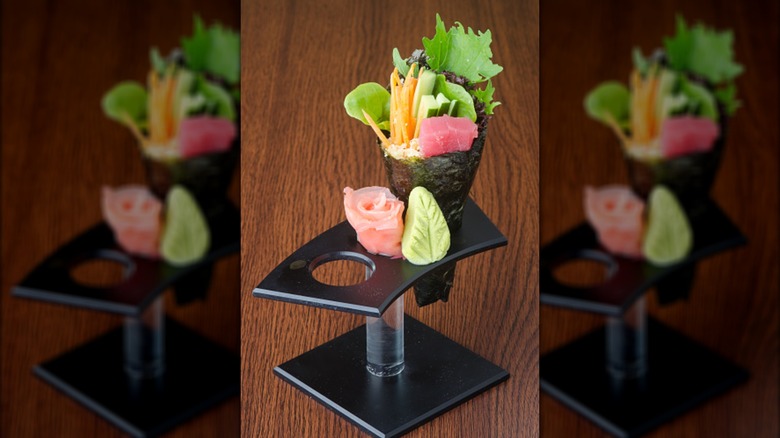Sushi Hand Roll Vs Cut Roll: What's The Difference?
All the decisions that need to be made when looking over a sushi menu can be overwhelming. Sushi or sashimi? Tuna, salmon, or yellowtail? Pieces or a roll? Rice inside or out? Once you think you've finally got it all figured out and order a crunchy spicy salmon roll, the server asks you one more question: Cut roll or hand roll? If you're left scratching your head, you probably need to know the difference between these two forms of maki sushi.
Maki sushi (also known as makizushi or norimaki) is any form of sushi featuring vinegared sticky rice combined with raw fish and other toppings, and then wrapped in flattened, toasted sheets of seaweed known as nori. Maki is also the name of sushi tightly rolled into a cylinder shape with a bamboo mat — a makisu — and then cut into six to eight pieces. Temaki is also made with rice, often raw fish, and nori, but the nori is hand rolled — "te" means "hand" in Japanese — into a cone shape.
Temaki becomes a convenient street food
Temaki was created in 19th century Japan as a convenience food. It was meant to be eaten without dishes and by hand, unlike maki, which can be eaten by hand or with chopsticks and is eaten off of a plate or from little boxes. The cone shape also made it easier to add soy sauce to the sushi without it dripping out. Temaki remains a popular street food 200 years later.
Americans have also tapped into the convenience of temaki, so much so that one publication dubbed 2025 the year of the temaki bar. The trend started in 2014, when Los Angeles-based sushi chef Kazunori Nozawa, who, after ending his popular omakase meals with hand rolls, opened the first temaki-only bar in the United States, KazuNori. There are now 11 locations in both New York and Los Angeles. Similar temaki bars have opened across the country, so don't be surprised if one opens in your neighborhood soon. You won't need to bring your chopsticks.

